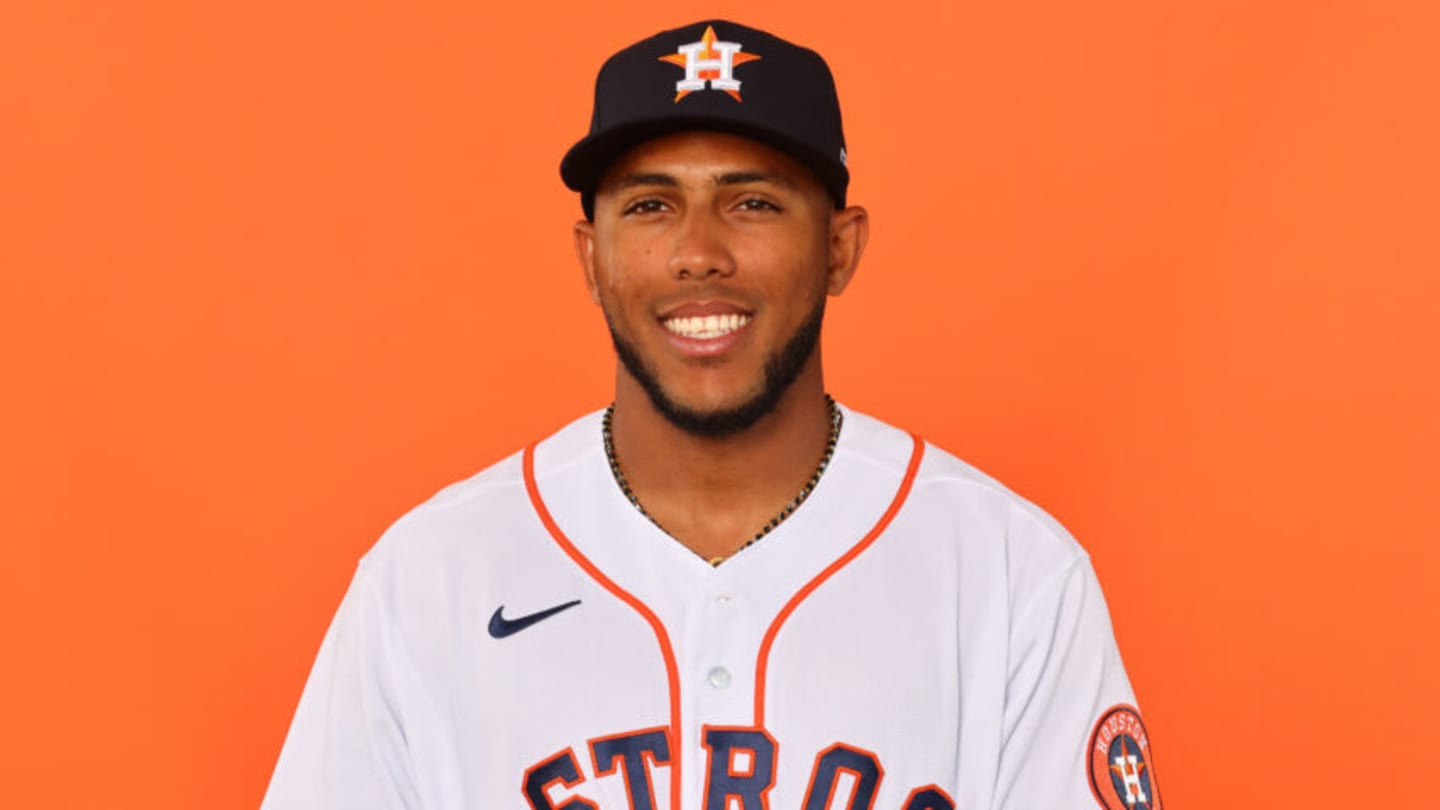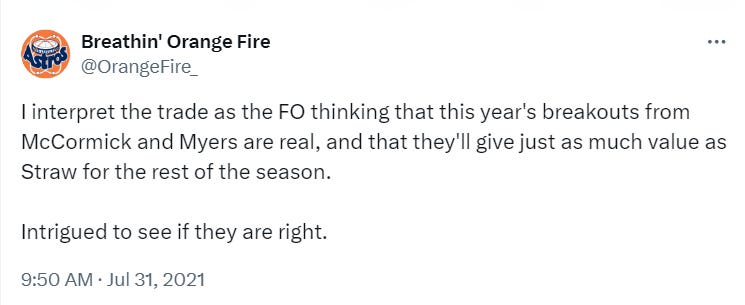The Many Knock-On Effects of the Kikuchi Trade
The Kikuchi trade raises a number of roster construction questions: Who's the depth starter now; Should they have traded for another starter; and Can Pedro Leon be a major leaguer?
The earliest returns on Yusei Kikuchi trade were bad, as he gave up a double to Yandy Diaz and a homer to Dylan Carlson before recording an out. But as a political scientist, I can tell you that the first couple of precincts that come back on election night can be outliers.
Kikichi then retired 16 of the final 20 batters he faced last night, striking out a 11 of them. Postgame, Manager Joe Espada praised Kikuchi’s altered pitch mix by saying “he couldn’t be any better.”
The debut of Kikuchi thus went very well from the strikeouts to playing the opening lyric to Lisa Loeb’s “Stay (I Missed You)” after every strike out to Yordan’s mad dash home in the bottom of the 7th for the winning run.
I’ve covered the quality of what the Astros got in Kikuchi and the high cost they paid. But today, I want to focus elsewhere. Trading Kikuchi for two major leaguers has a lot of impact on the Astros roster construction. There are three of those elements I want to address today.
1. Who’s the Next Starter Up?
A big part of the reason that the conventional wisdom among Astros fans quickly congealed that the Astros overpaid for Kikuchi is that they sent two major leaguers (read, people the average fan had heard of) to Toronto in the deal. But of course, the only reason that one of those traded players—Jake Bloss—had reached the major leagues was the immense set of injuries that Astros starting pitchers had suffered this season.
The Astros entered the trade deadline with only 5 healthy starting pitchers on their 40 man roster and leave the trade deadline in the same place. Which leads to an obvious question—what happens if another starter goes down with an injury.
But the need to include Bloss in the deal creates issues with the current roster construction. My guess is that if the team needs a starter for the short term, they will go to a bullpen game like we saw when Bloss himself was on the IL. If there is a longer term need, I think prospect AJ Blubaugh may be the next man up.
Obviously, the hope is that an extra starter is not needed and that Justin Verlander returns soon from his neck injury and that Luis Garcia completes his rehab from last season’s Tommy John surgery. Let’s hope that works.
2. Should They Have Traded For Another Starter Like Martin Perez?
One way to address the depth issue created by sending out an active member of the starting rotation is to acquire more starting rotation depth. In my article yesterday, I highlighted the return for 5 starting pitchers “who could start a playoff game” for their new team. But there were six other starting pitchers who were dealt over the last week—Alex Cobb, Paul Blackburn, Frankie Montas, Michael Lorenzen, James Paxton, and Martin Perez.
Should the Astros have acquired one of these starters as well? None cost as much as the other five, but a couple had meaningful cost to their return. The Reds got a major league outfielder (Joey Weimer) back for Montas. Blackburn required some real prospects for the Mets to get him, and Lorenzen went for a major league ready reliever. The Astros may not have been good matchups here. Cobb is currently on the IL, so he would not have addressed the Astros current need for rotation depth. Paxton has a long injury history, so you can see why the Astros might have wanted to avoid him.
But Martin Perez went from the Pirates to the Padres for a single 18-year old pitching prospect in the Dominican Summer League. Could or should the Astros have matched that?
Perez is no great shakes—he has a 5.20 ERA in 16 starts for the Pirates this season but does offer durability—he has made 20 or more starts in the 6 of the last 7 full seasons.
And I wonder if this is where we have reached the limit of Jim Crane’s budget. The Kikuchi trade likely puts the Astros into the second luxury tax threshold. Perez would essentially be a sixth starter who could well be DFAed as soon as Justin Verlander returns from the IL. It’s possible, if not likely, that Crane did not want to pay a 30% surcharge for that, even if it marginally helps the ballclub. Obviously, that is just speculation on my part.
3. Is Pedro Leon A Major Leaguer?
Putting Joey Loperfido in the Kikuchi deal opened up a spot on the Astros 26-man roster, and the team called up Pedro Leon. Leon was of course heralded as a prospect when he was signed out of Cuba, but Leon is now 26 and making his major league debut after spending parts of 4 seasons in AAA.
His age and tenure in AAA tells us that he’s not much of a prospect anymore, and that is reflected in his projections. For example, ZiPS projects him to slash .204/.291/.328 for a 79 weighted Runs Created plus, which is 21% below league average.
The hope is that Leon leveled up in a breakout season this year at Sugar Land. He slashed .297/.377/.519 in the Pacific Coast League this season, his best numbers in his three and a half seasons there. But much of that increase was due to an unsustainably high Batting Average on Balls in Play.
In 2021, then-General Manager James Click traded a starting player in Myles Straw in part because he evaluated that one of his players at Sugar Land—Jake Meyers—was as good, if not better, than Straw. As you can see, I saw what Click was thinking immediately when the trade was made.
My hope is that current General Manager Dana Brown made a similar judgment as Click did three years ago—I have an option at AAA as good as what I have in the majors and therefore I can trade the major leaguer.
My read of the projections and the BABIP numbers makes me skeptical that is the case.





